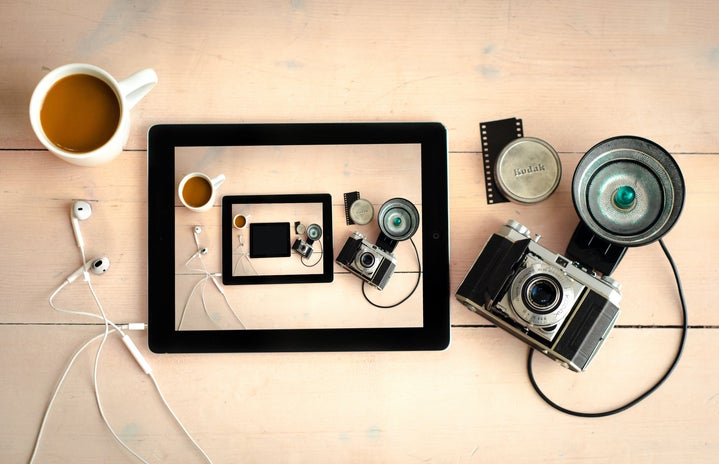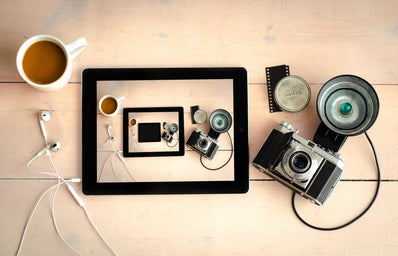In light of celebrating Women’s History Month this March, we would like to highlight the contributions that women have made to the arts. The feminist art movement arose in the 1960s amidst the anti-war demonstrations, as well as civil rights and queer rights movements. However, women had been making strides in art way before the 1960s.
Before feminism became a big movement, female artists were denied exhibitions and art gallery representation due to their gender. Women sought alternate media such as fabric, fiber, performance, and video to display their art and express their beliefs. These forms of alternate media were not historically male-dominated in the way that painting and sculpting was. The art that these women created sought to create a dialogue between the viewer and the artwork, by questioning the social and political landscape. Their art pieces were not always objects of aesthetic admiration, but a representation of the struggles and the beauty of being a woman. Below we’ve listed just a few of the many women who helped to pave the way for female artists throughout history.
Frida Kahlo
Frida Kahlo is perhaps one of the most badass women you will ever hear about. She was born Magdalena Carmen Frida Kahlo y Calderon in Mexico on July 6, 1907. She was a painter known primarily for her self-portraits and paintings with surrealism. Frida became very politically active in the 1920s and joined the Young Communist League and the Mexican Communist party. Her political views played a big role in her art. Her marriage with Diego Rivera, a communist painter, really pushed her to express herself more freely. However, Kahlo’s politics and their impact on her art are often ignored. According to Janice Helland, a Canadian professor of art history, depicting Kahlo as only an exotic and tragic figure results in the “whitewashing” the political statements in her artwork. Her artwork deals a lot with pregnancy, abortion (she had an abortion and a miscarriage later on), and gender roles (she did not always behave very “ladylike”) in a very open way. Kahlo was openly bisexual, something that was not the norm back then, and probably very frowned upon in Mexican culture. If you would like to learn more about her, I recommend the film Frida.
Judy Chicago
Judy Chicago is known as one of the pioneers of feminist art. She was born in Chicago in 1939 and she started creating art from a young age. She got her Bachelor’s of Fine Art degree from UCLA in 1962. She later got her Master’s in 1964 and began teaching at Fresno State. Chicago’s lifelong struggle with her identity began when she became a widow at the early age of 23, which was when she changed her last name to the name of her hometown. Despite that setback, she knew she wanted to defy the odds in the art world–she then began the first ever women’s art program. Only women were allowed in the course, which deviated from the male dominated art scene. She was led to start this because as recently as the 1970s it was still believed that painting was a masculine trade and that women merely did it for “craft”. One of her most famous pieces is an installation called The Dinner Party. She dedicated The Dinner Party to more than 1,000 women from different eras. The setting, which resides permanently at The Brooklyn Museum, is meant to elevate women from different margins of society and history.
Eva Hesse
Eva Hesse was a German-American sculptor born in Germany in 1936. She came to the United States during the rise of Nazism. She was originally drawn to abstract painting and commercial design practices, however, that drew her to experiment with everyday materials in attempts to reduce her means to minimalism. Hesse tried to use minimum materials to depict a wide range of abstract ideas. Her works can be called proto-feminist, a term used to describe a person in a philosophical tradition anticipating modern feminist concepts, who lived in an era when the term “feminist” was unknown. Her works were also highly criticized for the sexual innuendos present in her paintings and sculptures. Hesse’s pieces worked as a reaction to masculine geometries of minimalism. Her work related more to organic shapes and her sculptures were modeled after the human body. She did not regard herself as a feminist, but nevertheless, her art had an influence on the perception of women during post war times.
Ana Mendieta
Ana Mendieta was a Cuban-American artist that came to the United States as a refugee at the age of 12. The separation from her family and homeland played a big role in her artwork, which consisted mainly of land art, performance art, and film. Her artwork was deeply rooted in connections to the Earth. The Silueta Series is one of her most famous series of photographs. This series depicts earth-body works that revolve around her very own silhouette and body. The photographs show a morph from a goddess figure to a more earthly human form. Her works intersected feminist art, earthworks, and performance art. She contributed her unique style to the gender and racial equality movements of the 1970s. Mendieta suffered a tragic death at age 35, after falling out her 34-story high window. Following her death, she remained a sort of myth and tragic figure in the art world. I really recommend looking into her life and her art; it revolves around very controversial and strong topics such as violence.
Guerilla Girls
This is where things get crazy. The Guerilla Girls is a radical group of intersectional, feminist, female artists that are devoted to fighting sexism within the art world. It was formed in New York City in 1985. This group of women likes to remain anonymous because they want to focus more on the general movement and main issues than on their individual identities. They wear gorilla masks in public when they go out and expose discrimination and corruption in the art world, mainly at museum exhibitions. They spread their message or motto, “Reinventing the ‘F’ Word: Feminism”, through posters, books, billboards, stickers, and their public exposures. During the first year that the Guerilla Girls were operating, they discovered that women produced only 5% of artworks in the Modern Art Department and that 85% of nudes were of women. Women should not have to be naked to get into a museum. Since their founding, the Guerilla Girls have seen a lot of improvement in increasing awareness from art dealers, collectors, and critics in the art world. Additionally, they have sparked conversation and dialogue about sexism and racism in the art world.

